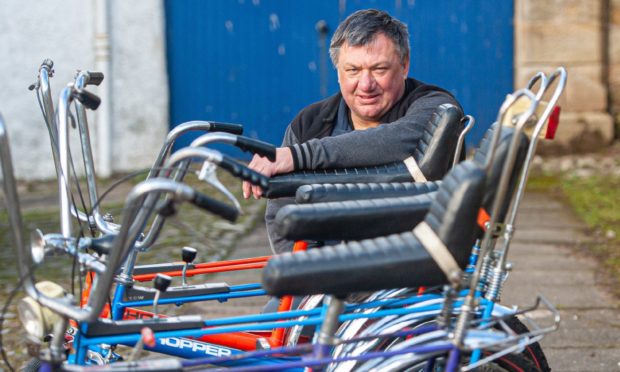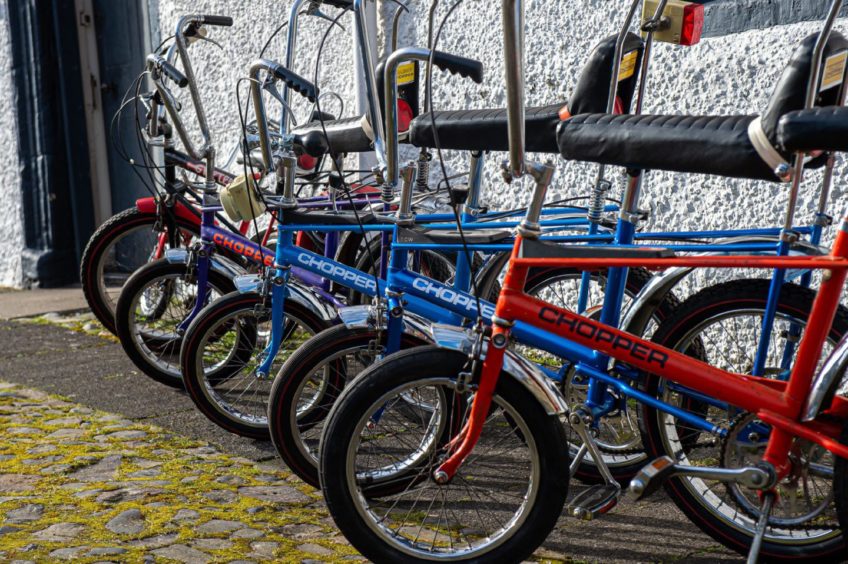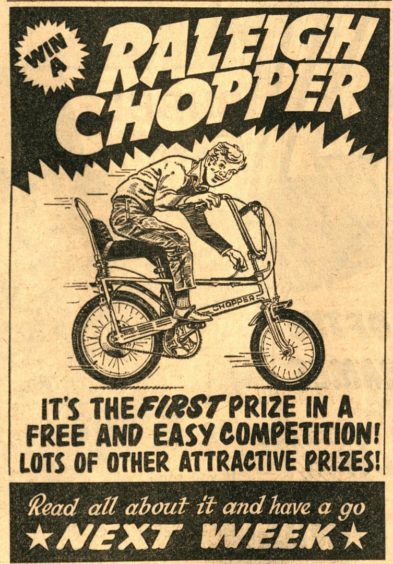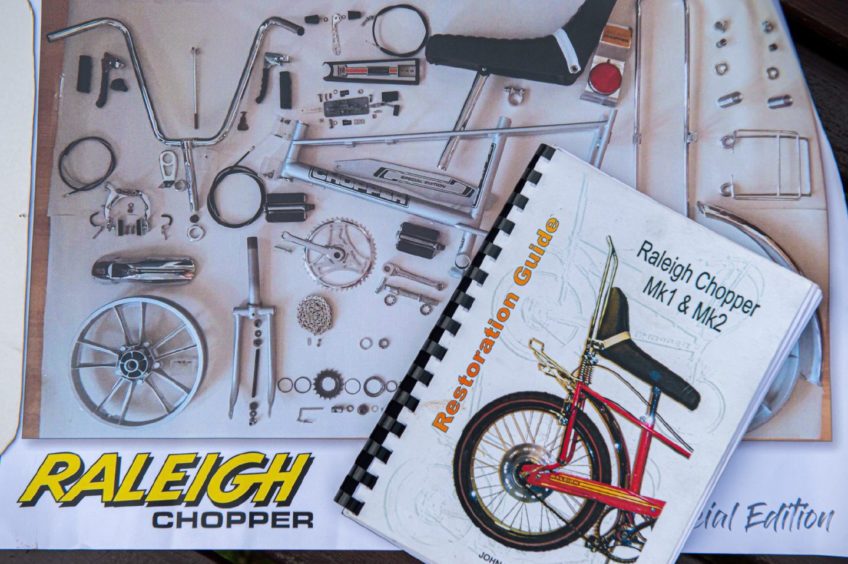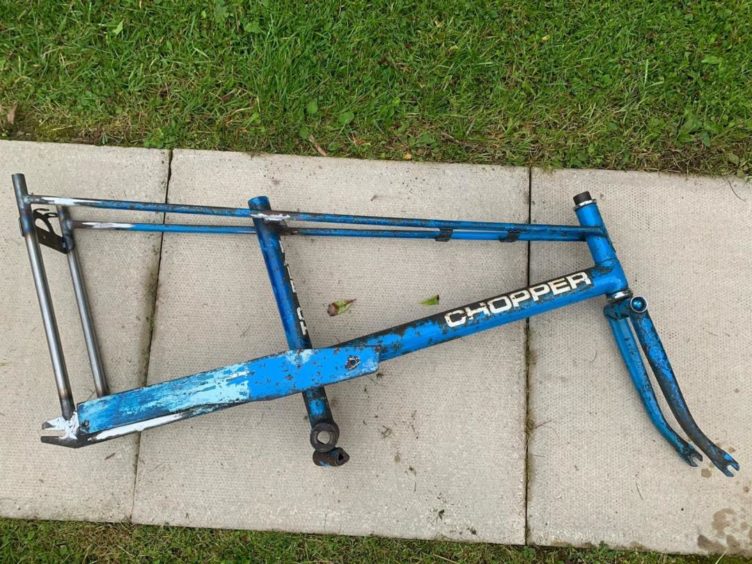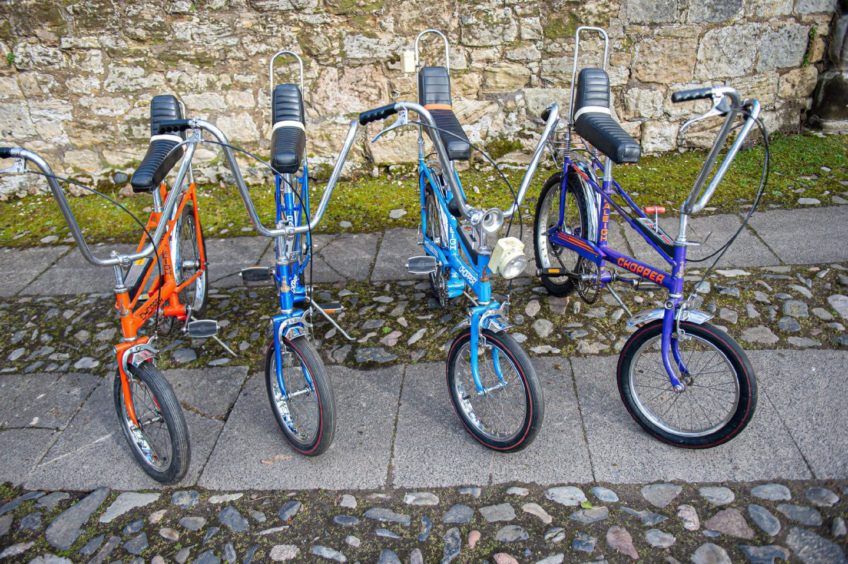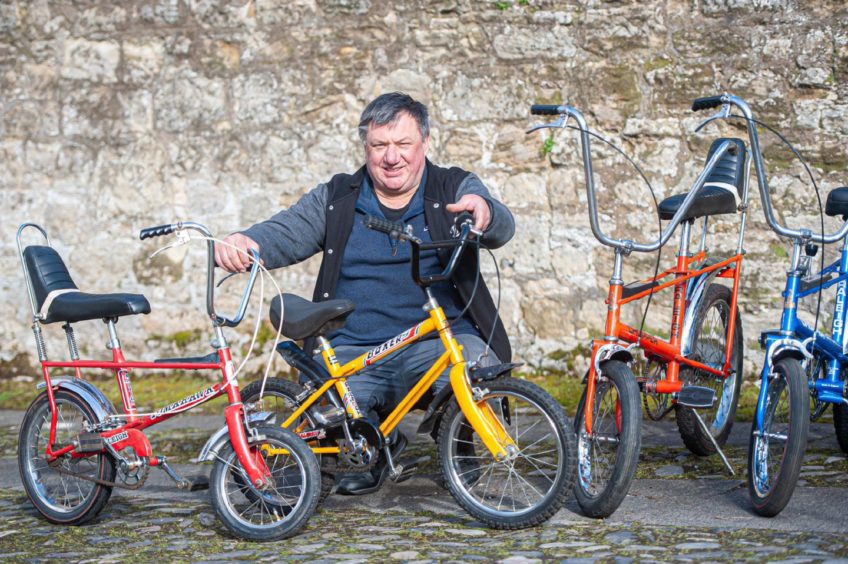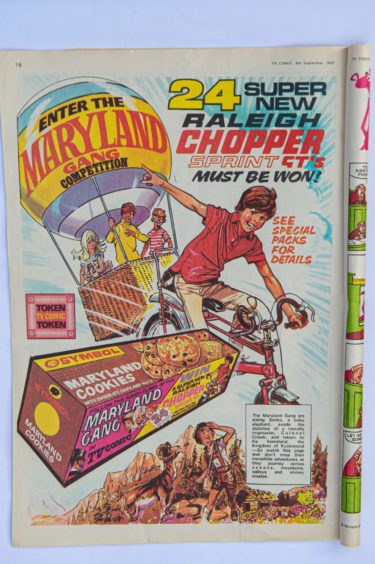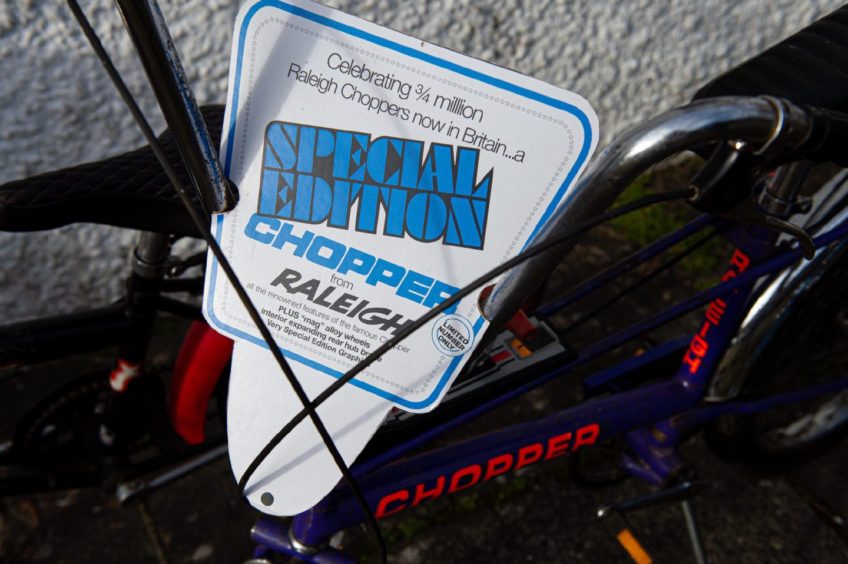The Raleigh Chopper embodied rebellion and freedom, and brought a taste of cool Americana to the playgrounds of Britain.
Inspired by drag-cars and motorcycles, the iconic bicycle was quickly elevated to cult status when it hit the streets in 1970 and topped Christmas lists for a decade.
With its high-rise handlebars, unique wedge-shaped frame – and likeness to the Harley Davidson in blockbuster film Easy Rider – the Chopper was unlike any other bike around.
However, it fell out of fashion in the 1980s when the cheaper BMX arrived on the scene, and the last genuine Chopper rolled off the production line in 1982.
But now, a Fife man is lovingly restoring old Choppers and transforming them from scrap to sought-after collectors’ pieces.
Teenage dream
Like so many children of the Seventies, Davie Speake had his heart set on owning a Chopper, and would gaze at them longingly in Kirkcaldy Halfords.
But the bikes cost upwards of £32, around £500 in today’s money, meaning the dream was never realised for many youngsters – including Davie.
He said: “Growing up, I was the youngest of five and there wasn’t the money for a bike like that.
“They were the iconic bikes of the 1970s.
“I used to look at them in Halfords on Kirkcaldy High Street when I was wee and wish I had one.”
But now Davie’s childhood dream has come true and he now owns several Choppers – restoring around 700 of them in the last 10 years.
It all started when Davie fixed up bikes in his youth; his brother raced stock cars so he spent a lot of time in the garage with him.
And over the last decade, Davie started tinkering with them again.
Driven by his love for the retro bicycle, he dedicates all his free time to saving scrappy bikes and carefully refurbishing them, and has even scooped prizes for his delicate handiwork.
Vintage parts
With only a limited window of production, coming by original Choppers and the parts to repair them is no mean feat.
But Davie is so renowned in vintage vehicle circles as the man who rebuilds bikes, that he is called on an almost daily basis by people who have spotted a beaten-up old bike or some useful parts.
Davie said: “Folk ring me if they see something they think I’ll be interested in.
“I get a lot of the bikes and the parts to fix them through events; vintage car shows like the one at Ladybank with the Fife Association of Vintage Vehicle Owners.
“People will often have them there or take parts. If someone finds one they’ll call me.”
The wide appeal of the unique bike means the globe-trotting Choppers he works on often come imported from America via collectors in Wales, as well as Ireland, and the length and breadth of Britain.
Scrapheap challenge
A labour of love, Davie devotes his evenings and weekends to rebuilding bikes in his Falkland workshop.
Starting from the frame up, he spends weeks and months getting each piece restored to perfection.
Davie, who is a builder by trade, said: “I probably don’t make a penny out of them, I just love restoring them.
“How long it takes really depends on the condition, I get the frame sandblasted and repainted, then I build them from there.
“I spend a long time sourcing parts to get them up to that level – it’s very expensive to buy original, second-hand parts.
“For example, re-chroming is very expensive and I get that done in England, so it costs a lot of money to courier the bikes and pack them.”
Starting off with only the bare skeleton of a stripped-back bike, Davie has the frame and forks sandblasted to remove years of wear and tear.
The stripped-back metal is then ready to be chrome-plated or painted, before the Chopper decals are carefully placed on the tubing.
Then comes the replacement handlebars, wheels, brakes and the distinctive padded seat with its sissy bar.
Best in show
Davie’s attention to detail has seen his authentic restoration catch the eye of judges at car shows in Fife, but also collectors as far afield as America.
He said: “I won a competition at the Fife Vintage Vehicle Owners Association show in 2019 – I go every year to take bikes and display them.
“There were 100 bikes and I won the trophy for the best bike in the show, I’ve still to hand the cup back as it was cancelled last year with Covid.
“I won it with a really rare MK2 Chopper, it has alloy wheels and it was the 1977 special edition made for the Queen’s Silver Jubilee.
“That model was made for a short spell and it’s the only one that’s ever had alloy wheels. I’ve got another two I’m restoring just now.”
Retro revival
Nostalgia plays a big role in the bikes that Davie sources, with many people seeking their childhood pride and joy once again.
Davie added: “One man wanted the Chopper he had when he was a kid – a 1971 orange MK1 – which he said he wanted to buy and donate to the V&A Dundee for a display.
“I’ve sold two or three to guys in Dundee who had ones as kids and wanted to own the exact model again.”
Davie also thinks that lockdown has kick-started a Chopper revival as people reconnect with old past-times.
He said: “They were popular in the early 80s too, but in the last year I’d say the interest in them has really rocketed with Covid, some folk have more time and money, but nothing to do with it right now.
“It’s people of that age; folk who wanted one when they were a kid in the 70s and 80s, and they want one again.
“Some people are buying them to use them, but others want them for man caves and shop window displays too.”
With vintage items becoming increasingly popular, programmes like hit TV show The Repair Shop promote the ‘make do and mend’ ethos when it comes to saving heirlooms.
This is something that Davie is fully on board with, however, nothing escapes his meticulous eye for detail.
He added: “They actually had a Chopper on their Christmas special, it was a red MK2 model, but in my opinion I didn’t think it was done quite right.”
Timeline
1967 – Raleigh’s chief designer Alan Oakley sketched the design for the first Chopper on the back of an envelope on a flight returning from America, having taken inspiration from Stateside Harley Davidsons.
However, this claim was contested by another designer Tom Karan of Ogle Design, who said Raleigh had approached the firm to create a bike to rival the Schwinn Sting-Ray.
1968 – First Chopper prototype is produced and tested.
January 1969 – The Chopper is debuted at trade shows in America. Unlike anything else on the market it featured high-rise handlebars, the choice of a single, 3-speed or 5-speed gear hub and a distinct frame-mounted gear level. As well as the unique wedge-shaped frame, it had a long, padded seat and its wheels were different sizes.
April 1969 – The Chopper MK1 goes on sale in the UK to the general public for £34, the equivalent of around £500 in today’s money. It was a three-speed model available in the colours blue, green, orange, mustard or yellow.
1971 – Raleigh sees a 55% increase in sales, the Chopper is credited with saving the manufacturer’s dwindling fortunes.
November 1972 – A debate was held in Parliament questioning the safety of the Chopper and even calling for manufacture to be prohibited. Concerns had been raised because the long seat design meant children were often riding the bikes with a passenger. Modifications were made for the next model.
1972 – The Chopper MK2 was released; the gear shift knob was replaced a T-bar lever, while the seat was made shorter to discourage people from riding pillion.
1976 – The production of the millionth Chopper was marked with a gold-plated edition. Two new colour options were released – Quicksilver and Space Blue.
1982 – The arrival of the BMX bike, made popular by blockbuster hit film E.T., saw the Chopper’s success fade and manufacturing ceased.
April 2004 – Raleigh released a limited edition Chopper ‘Hot One’ at Halfords.
2018 – All Chopper production ended.
